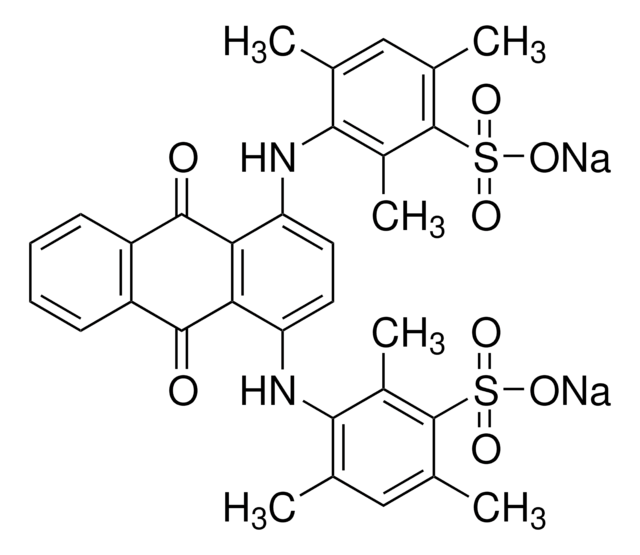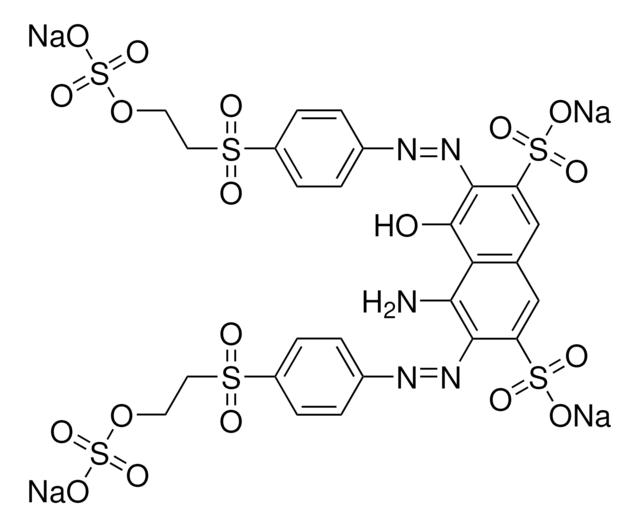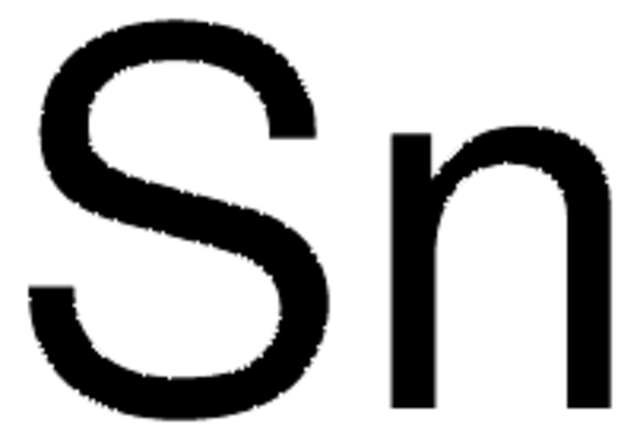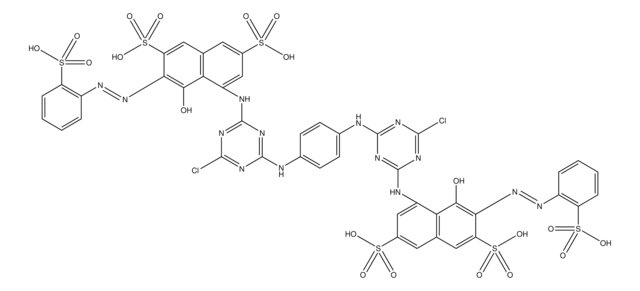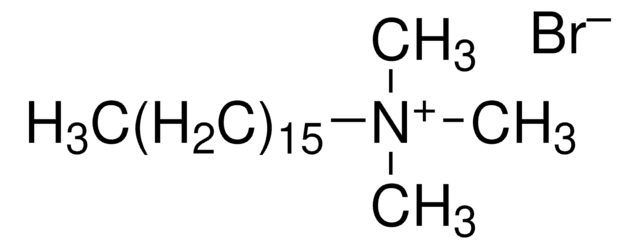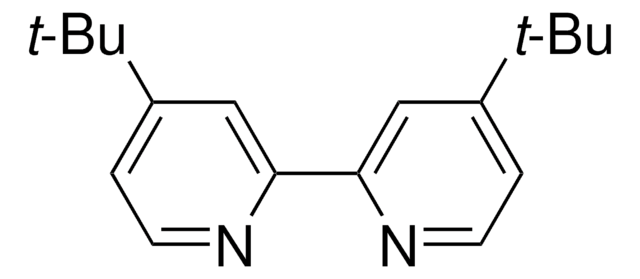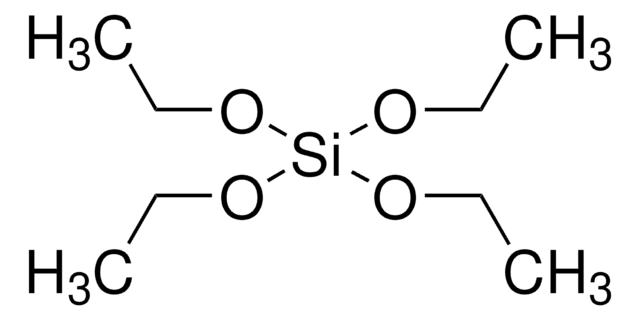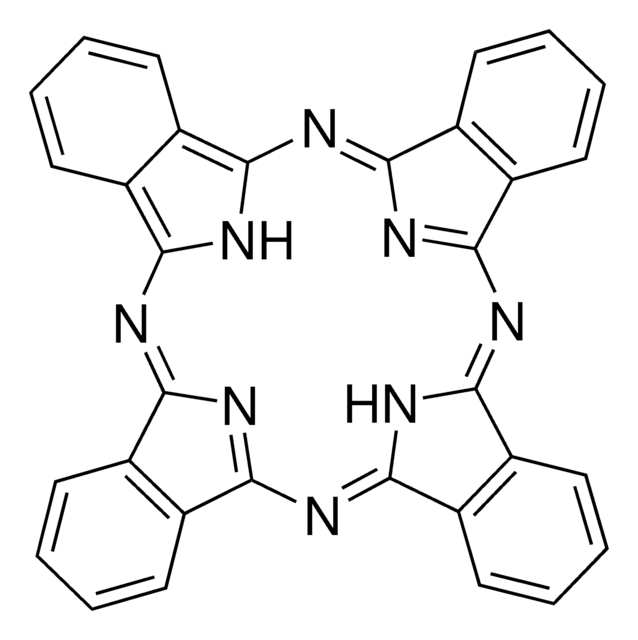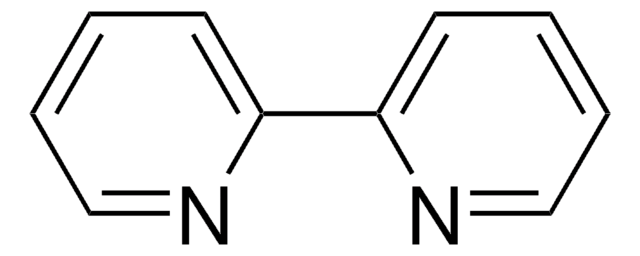About This Item
Recommended Products
form
powder
Quality Level
composition
Dye content, 50%
λmax
566 nm
ε (extinction coefficient)
≥18000 at 563-569 nm in H2O at 0.02 g/L
application(s)
diagnostic assay manufacturing
hematology
histology
storage temp.
room temp
SMILES string
[Na+].[Na+].[O-]S(=O)(=O)c1cccc(c1)\N=N\c2ccc(\N=N\c3ccc(Nc4ccccc4)c5c(cccc35)S([O-])(=O)=O)c6ccccc26
InChI
1S/C32H23N5O6S2.2Na/c38-44(39,40)23-11-6-10-22(20-23)34-35-27-16-17-28(25-13-5-4-12-24(25)27)36-37-29-18-19-30(33-21-8-2-1-3-9-21)32-26(29)14-7-15-31(32)45(41,42)43;;/h1-20,33H,(H,38,39,40)(H,41,42,43);;/q;2*+1/p-2/b35-34+,37-36+;;
InChI key
XPRMZBUQQMPKCR-XGQONITOSA-L
General description
Storage Class Code
11 - Combustible Solids
WGK
WGK 1
Flash Point(F)
Not applicable
Flash Point(C)
Not applicable
Choose from one of the most recent versions:
Already Own This Product?
Find documentation for the products that you have recently purchased in the Document Library.
Our team of scientists has experience in all areas of research including Life Science, Material Science, Chemical Synthesis, Chromatography, Analytical and many others.
Contact Technical Service